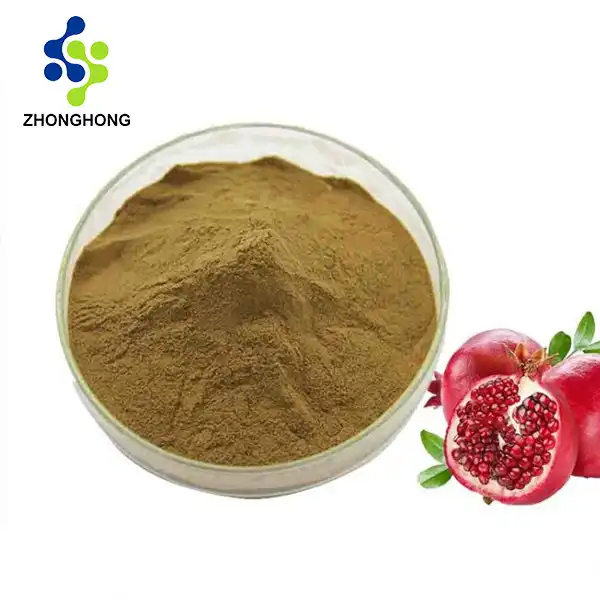Premium Pomegranate Extract by Shaanxi Zhonghongtou Tech: Benefits, Specifications & Global Supply
Introduction to Shaanxi Zhonghongtou Technology Co., Ltd
Shaanxi Zhonghongtou Technology Co., Ltd is a high-tech enterprise specializing in agile R&D, integrated manufacturing, and global distribution within the fields of chemistry, materials, and life sciences. With a focus on plant-based extraction, purification, and application, the company leverages cutting-edge technology and premium raw materials to produce natural plant extracts, cosmetic ingredients, nutraceuticals, pharmaceuticals, natural pigments, and sweeteners. Backed by partnerships with 5 top-tier universities, 20+ patented technologies, and a globally exclusive compound library, Zhonghongtou sets industry benchmarks in purity and safety.
Why Choose Our Pomegranate Extract?
Derived from premium pomegranate sources, our extract is crafted using advanced CO2 supercritical fluid extraction and membrane separation technology, ensuring maximum retention of bioactive compounds like punicalagins, ellagic acid, and anthocyanins.
Key Product Highlights
Purity & Safety: Exceeds industry standards by 20%, with heavy metals ≤1 ppm and pesticide residues ≤0.01 ppm (see table below).
Certifications: ISO, HALAL, KOSHER, and non-GMO verified.
Global Reach: Trusted by pharmaceutical giants and research institutions across 30+ countries.
Product Specifications & Benefits
| Parameter | Standard | Detection Method |
|---|---|---|
| Purity | ≥98% | HPLC |
| Heavy Metals | ≤1 ppm | ICP-MS |
| Pesticide Residues | ≤0.01 ppm | GC-MS |
| Microbial Limits | USP <61> Compliant | Microbial Assay |
Health Benefits:
Antioxidant Powerhouse: Neutralizes free radicals, slowing aging and boosting immunity.
Cardiovascular Support: Enhances blood flow and reduces LDL cholesterol.
Anti-Inflammatory: Ideal for joint health and metabolic syndrome management.
Skin Vitality: Promotes collagen synthesis in cosmetic formulations.
Usage & Scenarios:
Nutraceuticals: Capsules, tablets, or powdered supplements (recommended 250–500 mg/day).
Cosmetics: Serums, creams, and anti-aging products.
Functional Foods: Beverages, snacks, and health bars.
Quality Assurance & Production
[Insert Image: Advanced extraction process with HPLC and NMR equipment]
Our production facility employs high-performance liquid chromatography (HPLC) and nuclear magnetic resonance (NMR) for rigorous quality control. Every batch undergoes 15+ checkpoints to guarantee consistency and compliance with FDA, EFSA, and USP guidelines.
Packaging, Shipping & Support
Packaging: Customizable vacuum-sealed bags (1 kg to 25 kg) or OEM branding.
Global Logistics: DHL/FedEx-supported shipping with door-to-door tracking.
Samples & MOQ: Free samples available; MOQ starts at 10 kg.
After-Sales: 24/7 technical support and COA/MSDS documentation.
FAQ
Is your extract organic?
Yes, sourced from certified organic pomegranate farms.
Can it be used in vegan products?
Absolutely—100% plant-based and cruelty-free.
Lead time?
7–15 days after order confirmation.
Contact Us for Quotes & Partnerships
Elevate your formulations with our premium Pomegranate Extract. For pricing, specifications, or custom solutions, email liaodaohai@gmail.com. Join 500+ global clients who trust Zhonghongtou for innovation and reliability.
YOU MAY LIKE
_1728976869676.webp)







